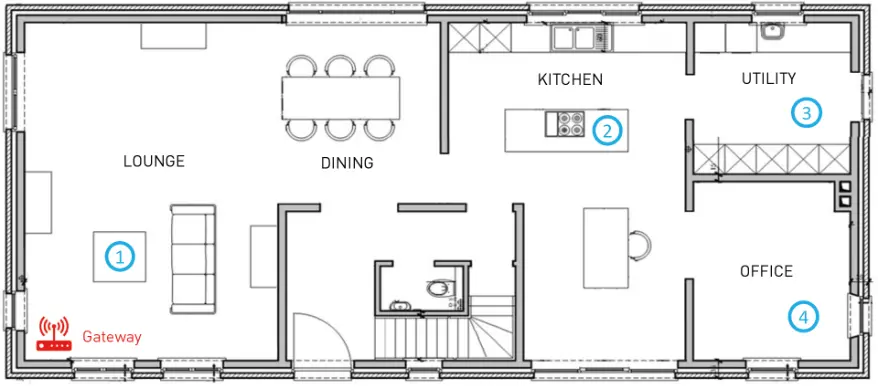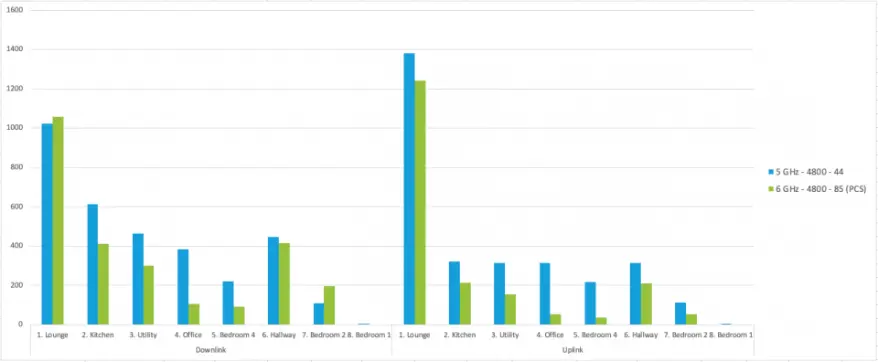We tested Wi-Fi 6 versus Wi-Fi 6E: here are the results!
Wi-Fi 6 is the latest generation in the well-known and very widely adopted Wi-Fi technology. Wi-Fi 1 was launched in 1999, and version 6 was officially presented in 2019.
The previous generations used the 2.4 GHz and 5 GHz bands, so did Wi-Fi 6 (to not make it confusing), but Wi-Fi 6E is capable of operating on the 6 GHz band as well. The Wi-Fi Alliance describes it as “allowing 14 additional 80 MHz channels and 7 additional 160 MHz channels”, who will not overlap with each-other as to reduce congestion, especially in areas with a lot of networks.
And this is what Wi-Fi 6E is all about: reducing congestion.
As our CTO Wim put it: compare it to a sports car, in ideal circumstances, it can always drive at top speeds, getting from A to B in an ideal time. In Wi-Fi 6 (and older) land, chances are high it will drive on congested roads with many old and some new cars. In Wi-Fi 6E mode, roads are added where old(er) cars cannot drive, and fast, modern cars that support 6E can move much more freely.
Using Wi-Fi 6E, requires all devices to support Wi-Fi 6E, both the clients and the access points or routers.
To learn more about the effect in coverage using the Wi-Fi 6E 6GHz spectrum versus the 5 GHz band, we offer a comprehensive training from experts and with ample Q&A: Wi-Fi 6 Training
Testing and measuring Wi-Fi 6E versus Wi-Fi 6
To put Wi-Fi 6E to the test and see how it performs against Wi-Fi 6, we acquired a Wi-Fi 6E access point and decided to use two client devices we already use to perform both throughput and coverage measurements in our Wi-Fi test house.
One of the first issues we were confronted with was that one of our clients could not connect to the 6 GHz band, it did not even see or display the SSID. This indicates there’s still a big issue to be resolved before moving to widescale Wi-Fi 6E deployment and adoption, but we’re confident this will be fixed soon.
Our second client found the network and connected without a hitch, so we were ready to go.
In order to get a representative result, we used 8 different positions in our Wi-Fi test house to perform the measurements.
Downstairs:

Upstairs

We used Wi-Fi band 44 for 5GHz and band 85 for the 6 GHz spectrum to make a fair comparison (more specifically 5.22 GHz and 6.375 Ghz, if you’d like to know).
For this experiment, the system was configured with maximum channel width of 160 MHz, the access point supported 4 spatial streams, but since the client was limited to only 2 the maximum theoretical raw speed was 2.4 Gbit/s.
As test application, we used our own ByteBlower Wireless Endpoint in combination with the 2.5 GBase-T extension to allow for an easy-to-use way to test the system’s capabilities.
Five parallel TCP sessions were used to measure throughput, as this is good practice.
Wi-Fi 6 versus 6E Test Results
This experiment shows that the overall coverage of the 6 GHz channel in the Wi-Fi house, which is basically a real-world environment simulator, is slightly less than the coverage of the 5 GHz channel.
It was expected that due to the higher frequency, 6E would suffer from more attenuation as it travels over distance, resulting in potentially reduced coverage. Our test results clearly displayed the impact of this effect.

Of course, the biggest benefit of Wi-Fi 6E is congestion avoidance, which is not demonstrated in this test but is of significant importance in real-world applications.
Informatively: this experiment was executed with no outside interference, our Wi-Fi house is located in a remote area where no interference is present unless it is injected as part of the experiment.
Conclusion
There seems to be an impact on coverage due to the higher frequency use, but since the new spectrum is clean and no support for backwards compatible devices is needed, this vastly outweighs the slight reduction in coverage.
Wi-Fi 6E also still seems to have some infancy problems with client connections, but we are confident these will get resolved quickly.
The tools we used for this test
To execute this test, we used our own ByteBlower Wireless Endpoint in combination with ByteBlower.
Interested in learning more about Wi-Fi 6E?
Wonder how your Wi-Fi X / 6 / 6E devices perform?
We are experts in Wi-Fi testing in controlled environments and our Wi-Fi testing house.
Contact us for more information!
- Category: Wi-Fi, Wi-Fi 6E, Wi-Fi Testing, Wifi6



























